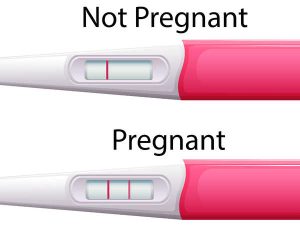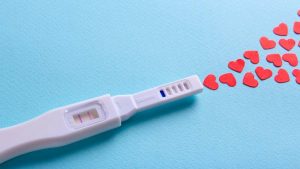If you are trying to conceive, you may have heard of fertility test kits. These are simple and convenient tools that can help you track your ovulation and identify your most fertile days. But how do they work and how can they increase your chances of conception? Here are some answers to these questions and some tips on how to use them effectively.
What are fertility test kits?
Fertility test kits are home tests that measure the levels of certain hormones in your urine or saliva. These hormones are related to your ovulation cycle and can indicate when you are about to ovulate or when you have already ovulated. There are two main types of fertility test kits: ovulation predictor kits (OPKs) and basal body temperature (BBT) thermometers.
Ovulation predictor kits (OPKs) detect the surge of luteinizing hormone (LH) that occurs about 12 to 36 hours before ovulation. LH is the hormone that triggers the release of an egg from the ovary. When you see a positive result on an OPK, it means that you are likely to ovulate soon and that you should have intercourse within the next 24 to 48 hours to maximize your chances of conception.
Basal body temperature (BBT) thermometers measure your body temperature at rest. Your BBT rises slightly after ovulation due to the effect of progesterone, the hormone that prepares the uterus for implantation. By charting your BBT every morning before getting out of bed, you can identify a pattern of temperature changes that can indicate when you have ovulated. This can help you predict when you will ovulate in the next cycle and plan your intercourse accordingly.
How can fertility test kits increase your chances of conception?
Fertility test kits can increase your chances of conception by helping you identify your fertile window, which is the period of time when you are most likely to get pregnant. The fertile window is usually about six days long and includes the day of ovulation and the five days before it. This is because sperm can survive in the female reproductive tract for up to five days, while an egg can be fertilized for up to 24 hours after ovulation.
By using fertility test kits, you can pinpoint your fertile window and time your intercourse accordingly. This can increase the likelihood of sperm meeting the egg at the right time and place. Studies have shown that couples who use fertility test kits have higher pregnancy rates than those who rely on calendar methods or cervical mucus observations.
How to use fertility test kits effectively?
To use fertility test kits effectively, you need to follow the instructions carefully and use them consistently. Here are some general tips on how to use them:
– Choose a fertility test kit that suits your needs and preferences. OPKs are more convenient and easy to use, but they may not work well for women with irregular cycles or hormonal imbalances. BBT thermometers are more accurate and reliable, but they require more dedication and discipline. You can also use both methods together for more information and confirmation.
– Start testing at the right time in your cycle. For OPKs, you need to start testing a few days before you expect to ovulate, based on your average cycle length or previous charts. For BBT thermometers, you need to start charting from the first day of your period until the end of your cycle.
– Test at the same time every day. For OPKs, you need to test at the same time every day, preferably in the afternoon or evening, when LH levels are highest. For BBT thermometers, you need to measure your temperature at the same time every morning, before getting out of bed or doing any activity.
– Record and interpret your results correctly. For OPKs, you need to compare the intensity of the test line with the control line. A positive result is when the test line is as dark as or darker than the control line. For BBT thermometers, you need to plot your temperatures on a graph or an app and look for a sustained rise of at least 0.2°F (0.1°C) above your pre-ovulatory temperatures.
– Have intercourse during your fertile window. Once you detect a positive result on an OPK or a temperature shift on a BBT chart, you should have intercourse as soon as possible and continue for at least two more days. You can also have intercourse every other day throughout your cycle to increase your chances further.




